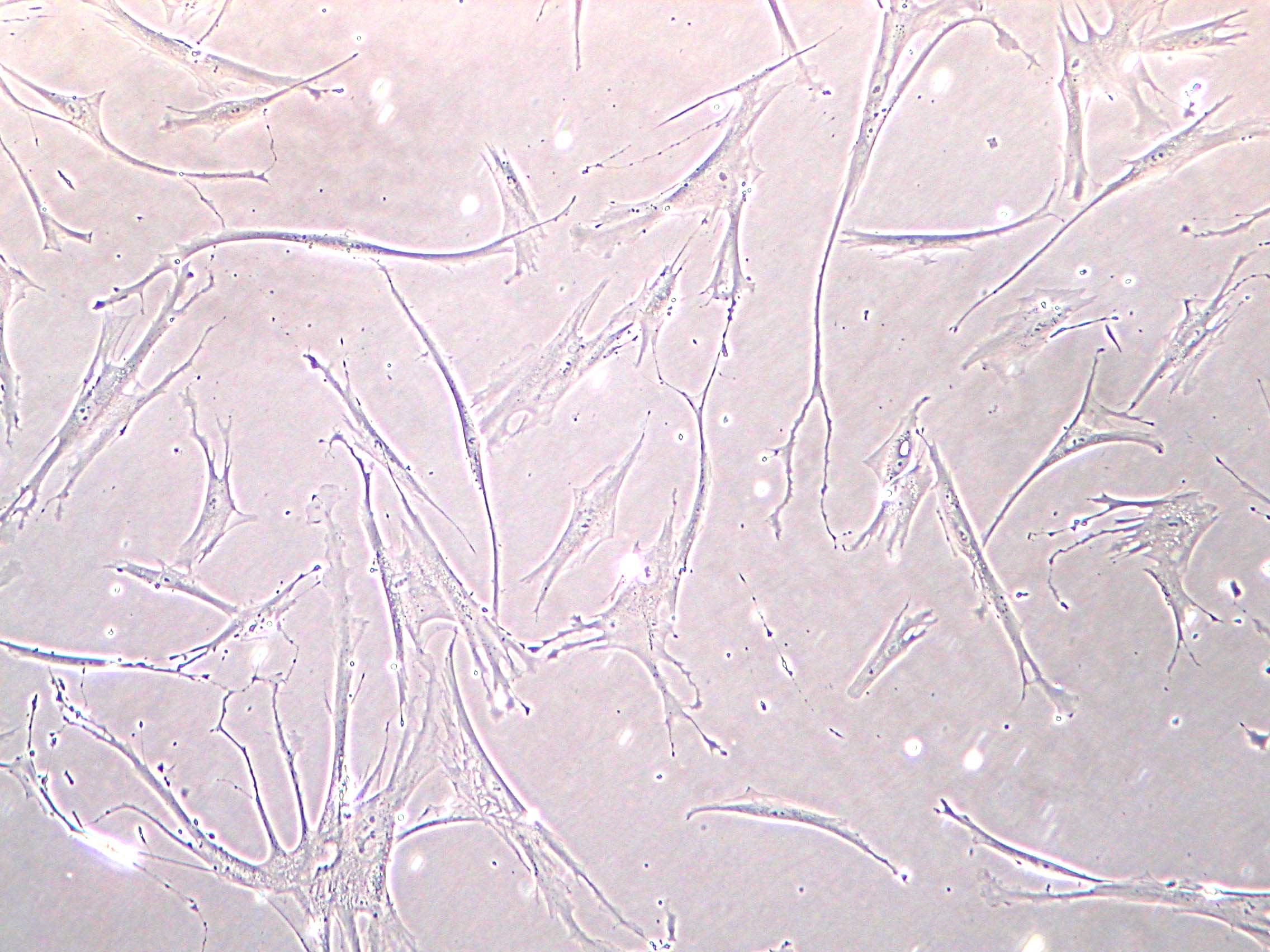Human mesenchymal stem
cells as a model system:
human
multipotent adipose-derived stem (hMADS) cells
Human mesenchymal stem cells are thought to be multipotent cells. They can replicate as undifferentiated cells and have the potential to differentiate to lineages of mesenchymal tissues, including bone, cartilage, fat, tendon, muscle, and marrow stroma. The human adipose tissue is a source of multipotent stem cells. Multipotent stem cells constitute an unlimited source of undifferentiated cells that could be used in pharmacological studies and in medicine. Recently, several publications have reported that adipose tissue contains a population of cells able to differentiate into different cell types including adipocytes, osteoblasts, myoblasts, and chondroblasts. More recently, stem cells with a multi-lineage potential at the single cell level have been isolated from human adipose tissue. These cells, called human Multipotent Adipose-Derived Stem (hMADS) cells, have been established in culture and interestingly, maintain their characteristics with long-term passaging. hMADS cells were shown to differentiate into adipose cells in serum-free, chemically defined medium.


Pittenger MF, Mackay AM, Beck SC, Jaiswal RK, Douglas R, Mosca JD,
Moorman MA, Simonetti DW, Craig S, Marshak DR (1999). Multilineage
potential of adult human mesenchymal stem cells. Science 284:143-147.
Rodriguez AM, Elabd C, Delteil F, Astier J, Vernochet C, Saint-Marc P,
Guesnet J, Guezennec A, Amri EZ, Dani C, Ailhaud G (2004). Adipocyte
differentiation of multipotent cells established from human adipose
tissue. Biochem Biophys Res Comm
315:255-263.
Rodriguez AM, Elabd C,
Amri EZ, Ailhaud G, Dani C (2005). The human adipose tissue is a source
of multipotent stem cells. Biochimie
87:125-128.